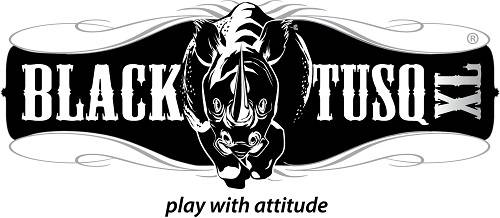What is Black TUSQ XL?

Black TUSQ XL is a proprietary material which is precision engineered under high pressure and heat. It is permanently lubricated throughout so it reduces the friction between the nut material and the string. It is specifically formulated to deliver the right frequencies with the optimum transfer rate to the top of your guitar every time. Because of the way Black TUSQ XL is made, it is a consistent material that is rich in tone and harmonic content.
Can I modify Black TUSQ XL to fit my guitar?
Due to Black TUSQ XL’s consistency it is extremely easy to work with. You can easily modify it with fine grit sandpaper or other commonly used shaping tools.
What is the difference between Black TUSQ XL and a TUSQ nut?
The biggest difference is that Black TUSQ XL is permanently lubricated; the lubrication prevents strings from binding in the slots. TUSQ is not. You get better tuning stability especially when using a tremolo or bending strings. Black TUSQ XL also has more of a midrange boost as compared to TUSQ.
What if the strings start to dig into the slots?
If you’re experiencing any kind of binding, you can easily fold a piece of 200 Grit sand paper and sand the notch off. Again, being a consistent material you can file/sand the nut/saddle and you will still be working with the same quality material.
How is Black TUSQ XL different than any other material (bone, micarta, and corian) used in saddles in nuts?
Black TUSQ XL is a very resonant material. This resonance alone will give you a very full and deep sound that will amplify your tone to a whole new level. Secondly, it's a consistent material, allowing every note you play to sound just as clear and full as the next. In comparison, bone has natural grains which cause dead spots. These dead spots damp balance in tone and harmonic content. Micarta is made partially from linen and paper scraps which makes it hard to work with while corian is nice to work with but also damps sound.
You have so many guitar nuts, how do I figure out which one is right for my guitar?
We probably have a nut that either fits perfectly or is close. The best thing to do is measure your nut for length, thickness, height and, E to E spacing. Pay close attention to the E to E spacing, then check your measurements with the ones on our site. The material is easy to shape so if it's a little longer or higher, so it's no big deal to work it down a little.
Will installing a BLACK TUSQ XL (formerly Trem-Nut) or TUSQ nut change my tone?
A quality nut will improve the tonal quality of your guitar when playing open strings. It will also improve the performance of your guitar by reducing string binding and improving tuning stability.
Why is there a little tab on the bottom of the PT-5000-00 nut?
With the spacer tab in, the PT-5000 fits many Strat and Tele styles guitars that have a flat-bottomed nut slot. By removing the spacer (by filing, grinding or cutting) it will fit original Fender, G&L-style curved bottomed nut slots. We also have a nut with similar specs but a flat bottom: the PT-5010-00.
How deep should I carve the groove for a nut on my guitar neck?
On a new Graph Tech nut, it's recommended that you sand the bottom of the nut to compensate for the height rather than carve the guitar. You can then fine tune the height of each string, if necessary, with nut files or, in a pinch, a piece of 400 grit sandpaper folded as sharply as possible. After restringing, press down each string in turn on the 3rd fret. Now check the clearance of the string above the first. If it's touching the first fret, the nut slot is too low. Proper nut slot height is just a paper thickness between the string and the first fret on the plain strings and about twice that on the wound strings.


